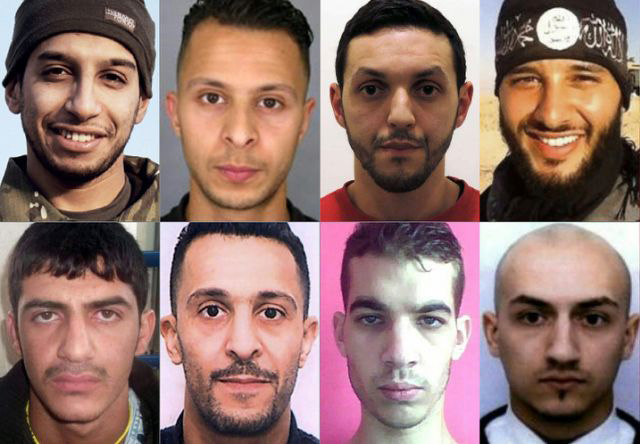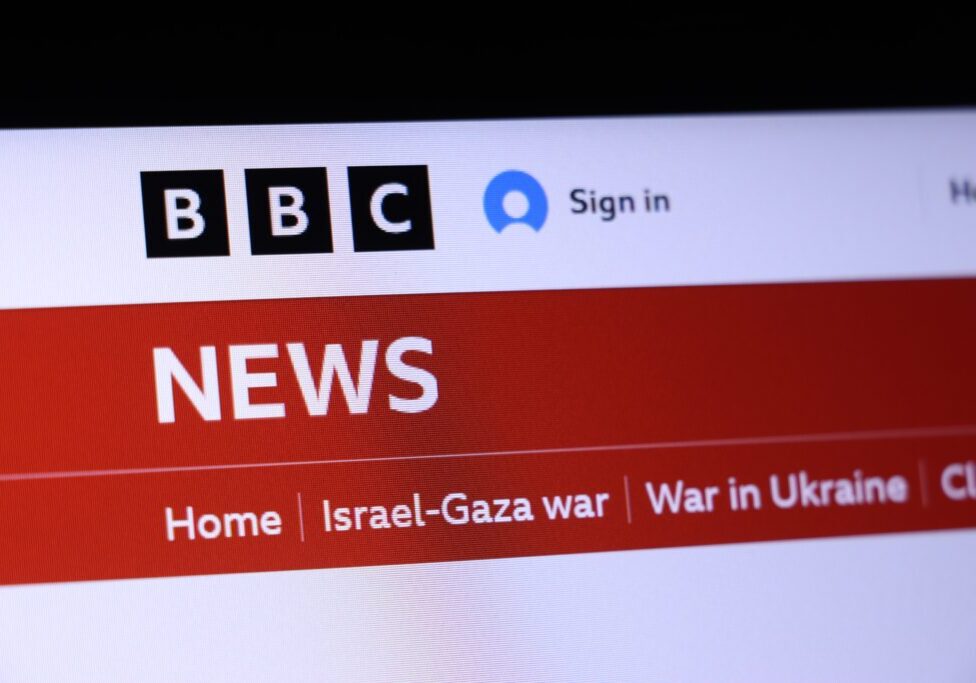Australia/Israel Review
The Mind of a Terrorist
Apr 28, 2016 | Matthew Levitt

Matthew Levitt
Allow me to paint a picture: The office of the Mayor of the Molenbeek municipality in Brussels sits alongside a picturesque, typically European cobblestone square. Across the square, within plain view of the municipal government, sits the family home of Salah Abdeslam, the Islamic State terrorist who was finally captured on March 18th after evading authorities since the November Paris attacks. Nothing separates the two buildings, but they are a world apart.
This is the bifurcated Brussels I saw when, coincidentally, I was in Belgium a few days before the terrorist attacks that killed 31 people and wounded hundreds on March 22. I was there to meet with senior counterterrorism, intelligence and law enforcement officials, as well as with local officials in the troubled municipality of Molenbeek, the subsection of Brussels where Abdeslam grew up and which even Molenbeek’s Mayor, Françoise Schepmans, describes as “a breeding ground for violence.”
The harsh fact is that communities ripe for radicalisation exist across Europe – including in the heart of the capital of the European Union – and no one quite knows what to do about it. The day of my visit to Molenbeek I first rode a few quick stops on the Brussels metro from my hotel in the EU district to Molenbeek, where I met the Mayor at her office together with police chiefs, members of the local police department’s “counter-radicalisation cell” and civilian “prevention officers” who had just concluded their weekly status-check on the local government’s counter-radicalisation, and social integration efforts. Their goal seems Sisyphean: reintegrating returning foreign terrorist fighters back into society and preventing still more disenfranchised Muslim youth from looking to the Islamic State for purpose and belonging.
The problem: Molenbeek is like another world, another culture, festering in the heart of the West. Only eight of 114 Imams in Brussels speak any of the local languages. The majority Muslim municipality of about 100,000 people is the second poorest in the country, with the second youngest population, high unemployment and crime rates, and a nearly 10% annual population turnover that makes it a highly transient community. By some accounts, nearly a third of Molenbeek residents are unemployed.
Unsurprisingly, Molenbeek has become an almost ideal recruiting ground for the Islamic State, and Belgium has the highest number per capita of Western foreign fighters who have travelled to join the Islamic State in Syria and Iraq (and, more recently, Libya). And the majority of these came from Brussels, and Molenbeek in particular, according to Belgian Interior Minister Jan Jambon. The local municipality has been described as one of a few Islamic State “hotbeds of recruitment” around the world. In the words of Belgian Prime Minister Charles Michel, “Almost every time, there is a link to Molenbeek.” The recent bombings were no exception.
Recruiters offer a sense of family to people from broken homes; of belonging to people who feel disenfranchised from society; of empowerment to people who feel discriminated against; and of a higher calling and purpose to people who feel adrift. Recruiters pitch small groups of friends and family together: “You don’t really belong here. You are not wanted here. You can’t live here. You can’t get a job here.” Only then comes the religious extremist part: “Clearly, you should not be living among the infidels.”
What Islamic State offers them, in a nutshell, is a fast track from zero to hero.
Mix in a gangster culture and you have a combustible combination. In ghettoised neighbourhoods like Molenbeek, today’s criminals are tomorrow’s terrorists, and the radicalisation process is in hyperdrive. As a result, “these guys are not stereotypical Islamists. They gamble, drink, do drugs. They are lady killers, wear Armani, fashionable haircuts. And they live off crime,” according to an article published by Pro Publica. Time and again, it turns out the local police were aware of suspects like Abdeslam, but only as small-time thieves. “We knew of several Paris-related suspects before,” a police officer told me as I sat down with the Mayor, “but not for terrorism reasons, just petty crime and small incidents.”
The Mayor quickly chimed in, determined to be clear that I understood there was no way to know these crooks had suddenly become terrorists, adding “there was no suspicion of radicalisation.” But there is one other common thread that runs through all these cases: “The people who leave [for Syria and Iraq] today are all attracted to violence,” Mayor Schepmans said. Dutch officials echo this sentiment, noting in a recent study that “everyone who has travelled since 2014 to the area under [the Islamic State’s] control will have seen the propaganda images of atrocities against ‘non-believers’.” They know what they are getting into.
And while there is a component of religious extremism, Belgian officials stress, it is only skin deep. The suspects appear to be mainly criminals who are attracted to something that gives them identity and a sense of empowerment. They are radicalised to the idea of the Islamic state far more than to Islam.” Salafism [a radical Islamist ideology] is mainstream in Belgium,” was a refrain I heard from several of the officials I met. “Not all Salafists are terrorists,” they stressed, “but all our terrorists were targeted for recruitment by Salafists in these neighbourhood extremist networks.”
Syrian Civil War, Islamic State, and Radicalisation in Hyper Drive
It is important to consider as context how the war in Syria transformed the nature of radicalisation and recruitment of foreign terrorist fighters for the Islamic State (and, indeed, for other Islamist violent extremist groups). Initially, before the Islamic State existed, foreigners travelled to fight in Syria to defend fellow Sunni civilians and defend communities against persecution by the Assad regime. That was a much easier and faster radicalisation process than had been the case under al-Qaeda. A person only had to be convinced to fight a defensive battle to protect Sunni civilians from the gas attacks, barrel-bombings and starvation campaigns of the Assad regime, not an al-Qaeda-style offensive Jihad against the West.
As the conflict dragged on, more people began to fight with the Jabhat al-Nusras and Ahrar al-Shams of the world because these more radical groups enjoyed greater financial support and therefore had access to more money and better weapons. Over time, many people who went to fight in Syria for altruistic reasons became increasingly radicalised by exposure to these more extreme groups. Some would later join the Islamic State.
The creation of the Islamic State and its so-called caliphate further fuelled the pace of radicalisation. For many vulnerable, at-risk Muslim men and women in Europe, the Islamic State provided the opportunity to be a part of building something exciting and important. They were being invited to get in on the early building stages of re-establishing a caliphate, just like the early followers of the Prophet Muhammad, making them part of something historic and bigger than themselves.
The Islamic State simplifies world conflicts into black and white “which allows someone the opportunity of being the ‘hero’ – an empowering narrative for a disenfranchised, disengaged individual.” [Danica Kirka, “ISIS is luring normal Western women with troubling simplicity,” Business Insider, May 28, 2015] And while the Syrian civil war and then the founding of a so-called caliphate significantly sped up the pace of the radicalisation process, there is today a powerful undercurrent that draws in at-risk youth having less to do with Islam or Assad but with providing “the thrill of being part of something bigger. It is a youth subculture… and peer groups play a big role.” [Jason Burke, “The story of a radicalisation: ‘I was not thinking my thoughts. I was not myself,'” The Guardian, November 26, 2015]
After the Paris attacks in November, Belgian Police intercepted a phone call to Brussels from Syria and overheard a Belgian militant inquiring about his friend Bilal Hadfi, who had been a suicide bomber in Paris. The militant asked what his friends were saying about Bilal back in the “sector”, a reference to Molenbeek where many of the Paris attackers grew up. “Are they talking about him? Are they praising him? Are they saying he was a lion?” the militant asked. His particular interest in his peer’s opinion of Hadfi made one thing perfectly clear – for him and others like him, the Islamic State was more about personal glory than anything else.
The Road Ahead
When I met with the Mayor of Molenbeek, she was frank about the task ahead in getting a handle on radicalisation in the municipality but was equally blunt in describing the area as a victim of lack of government attention and investment. There is also confusion at the government level about how to handle the problem.
Municipal authorities stressed that actual counterterrorism is the job of the Federal Police, who maintain a consolidated list of some 670 terrorist suspects, including people who have gone to fight in Syria and Iraq (and, more recently, Libya), returning foreign fighters, and individuals who seem inclined to become foreign terrorist fighters.
Following the Brussels bombings, authorities are laser-focused not only on finding all the perpetrators and their accomplices, but mapping out the network of Islamic State terrorists on the ground in Belgium. That will be no small task, but even that kind of counter-terrorism success will only go so far towards re-establishing a sense of security in Belgium in particular and Europe more generally. Hardening targets, implementing greater border security measures, and enhancing intelligence collection and information sharing are critical and still sub-par, but these tools will only help us contend with yesterday’s threat; they won’t help us get ahead of tomorrow’s.
The good news is that Belgian authorities have now realised the need to build a prevention program. And to be fair, that realisation came not this year but 15 months ago, when Belgian authorities raided a residence in Verviers a week after the Charlie Hebdo attack. The raids thwarted “major terrorist attacks” in Belgium and led to the intensification of “Plan R” – the government’s national counter-radicalisation plan. The plan predated the Verviers raid, on paper, but it has now led to tangible changes. A Coordination Unit for Threat Analysis (CUTA) serves as a fusion centre between federal level national security agencies and local police departments. Nearly 18,000 police officers have been trained to spot potential radicalisation identifiers under the Community Policing to Prevent Radicalisation (COPRA) initiative. And the Federal Police have instituted a “grasping approach” to radicalisation cases in which police are instructed to “follow up and don’t let go” until there is no longer any threat the person in question is being radicalised to violence.
In the months before the Brussels bombings, local officials also developed “Plan Molenbeek” to address what they described to me as “the need for proper institutions to address the unique issues facing the municipality.” They remain desperately understaffed, but they have already trained 700 community field workers (including teachers and social workers) to spot signs of radicalisation and partner with prevention officers to develop a customised intervention for each case. They meet with counterparts in other municipalities facing similar issues to share lessons learned. This is especially important, one official told me, since “we are all learning by doing.”
Still, since the November Paris attacks, tracking cases of people on the road to radicalisation has only gotten harder. “Paris was a game changer,” a local police officer in Molenbeek told me. “Since then it’s been like a tsunami of information flowing in from all our partners, including concerned members of the community, federal agencies, and our own civilian prevention officers.” Those prevention officers play a critical role as civilian employees of the municipality focused solely on integrating people into society, but they are severely understaffed. The local police also have a counter-radicalisation cell, but they too lack resources. Even with a staffing boost after the November Paris attacks, the cell numbers only eight officers. “Most of the people we come across are youngsters, unemployed, and often involved in criminal activities,” prevention officers told me. “We try to integrate people we see into society, that ‘s the most important thing now, ideally.” A police officer chimed in, “And we prosecute, as necessary.”
After meeting with officials in Molenbeek, I allowed myself to feel just a touch of optimism: the police and prevention officers I met in Molenbeek were among the most impressive I’ve met anywhere. “We are discovering on a daily basis new ways to work in the prevention space,” one of them commented as our meeting came to a close. The problem: What they need is in short supply: more resources and more time.
Matthew Levitt is the Fromer-Wexler Fellow and Director of the Stein Program on Counterterrorism and Intelligence at the Washington Institute for Near East Policy. The above is excerpted from testimony he submitted to the US Senate Committee on Foreign Relations on April 12, 2016. © Washington Institute for Near East Policy, reprinted by permission, all rights reserved.
This article is featured in this month’s Australia/Israel Review, which can be downloaded as a free App: see here for more details.
Tags: Europe






